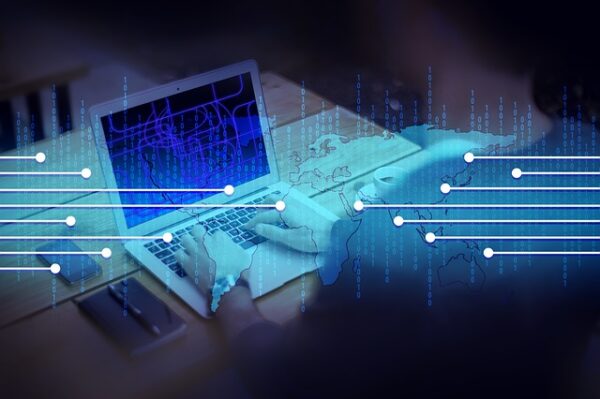Software-as-a-Service (SaaS) is now adopted globally given its feasibility for businesses. While it helps streamline operations, it can also expose sensitive business and customer data to cybercriminals. The rising increase in SaaS cyberthreats has consequently triggered CISOs to work on SaaS security. Today, implementing an adequate SaaS security checklist is vital for every business to help ensure online safety.
Why Is SaaS Security Important?
SaaS is an innovative technology that facilitates app and data storage without any on-premise infrastructure. This cloud-based deployment is beneficial for both large and small businesses as it helps them save the time needed for arranging and maintaining adequate hardware, space, and staff. Also, it empowers businesses to invest profits in other productivity aspects. Indeed, these advantages have contributed to the expanding SaaS market, taking it from $60 billion in 2017 to $180 billion in 2022.
This increasing SaaS dependency of the business community has attracted the attention of cyber criminals. They know attacking SaaS may open up a treasure trove of data and money-making opportunities. Thus, they employ various malicious strategies to attack cloud services, steal data, and extort money from the victims in multiple ways such as ransomware attacks. In light of these risks, consulting a specialized SaaS SEO agency can help businesses enhance their online security and protect their valuable data.
Alongside financial damage, SaaS risks also expose businesses to reputational damage. For instance, such attacks hint toward poor security practices. Moreover, since such attacks may even involve the victims’ clients and customer data, they may lose their overall credibility and trust within the market.
SaaS Risks to Watch Out For
While the threats could be many, some common SaaS risks that make most businesses vulnerable to cyberattacks include the following.
- Diminished accountability for data security between vendors and clients.
- Poor and unmanaged data security make SaaS resources vulnerable to breaches.
- Inadequate SaaS analysis by firms may lead to sourcing poorly secured SaaS solutions.
- SaaS vulnerabilities due to misconfigurations.
- Poor identity and account management may leave vulnerable accounts with high privileges in SaaS solutions.
SaaS Security Checklist – Best Practices CISOs Advise
1. Identify the Common SaaS Risks
The list of SaaS security risks given above isn’t an exhaustive one. In fact, with global tech advancements and SaaS adoption, SaaS risks are increasing exponentially.
The specific nature of SaaS risks for a given organization depends upon the nature of its business and operations. Therefore respective CISOs should identify SaaS risks that will likely threaten their firms. Oracle’s SaaS security checklist is a classic example of how an organization can identify threats to its SaaS infrastructure.
2. Criteria for Evaluating SaaS Providers
Sourcing poorly secured SaaS solutions can become a big cybersecurity blunder for any business. Therefore, based on the business requirements and existing IT infrastructure, CISOs should jot down a comprehensive list of parameters for analyzing a SaaS provider before deciding to partner. They may also consider reviewing their credibility and customer reviews before finalizing any deals. Being vigilant at this stage can significantly alleviate future security risks.
3. Implement and Maintain Compliance
While enforcing compliance with security regulations is difficult initially, it offers tremendous security benefits in the long run. That’s because when all checkboxes regarding compliance matters are adequately ticked, CISOs can trust they have thoroughly deployed concise security measures. Therefore, when preparing a SaaS security checklist, including compliance with GDPR, HIPAA, SOC 1 and SOC 2, and other industry standards is vital.
4. Impose Identity and Access Management (IAM)
After deploying a SaaS resource, enforcing identity and access management (IAM) helps IT teams to have a centralized SaaS risk control. Coupling IAM with robust authentication methods such as multi-factor authentication (MFA) and single sign-on (SSO) further increases SaaS security by ensuring authorized access only.
With that said, implementing IAM isn’t possible with traditional SaaS products. Therefore, before proceeding, it’s better to double-check the IAM provision from the corresponding SaaS provider.
5. Create A Backup Policy
As an organization, ensuring proper backup across all connected devices and core IT components is a crucial responsibility. Although, in a firm-client relationship, the overall onus of backup maintenance falls on the client. The relevant firm must ensure adequate backup configurations will facilitate the client. Also, to prevent data loss in case of SaaS breaches, businesses must maintain multiple backup copies, including at least one offline solution.
Wrapping Up
SaaS applications have revolutionized the business sector by reducing operational time, costs, and resource input. Thus, adequate deployment of respective SaaS solutions adds to the productivity of many organizations. To achieve the maximum benefit, businesses should ensure effective SaaS security across all resources.
Therefore, maintaining and implementing a comprehensive SaaS security checklist according to the business nature can help ease the burden for CISOs. Furthermore, in self-input, CISOs may also consider hiring professional security firms, such as Indusface, for assistance in this regard.

